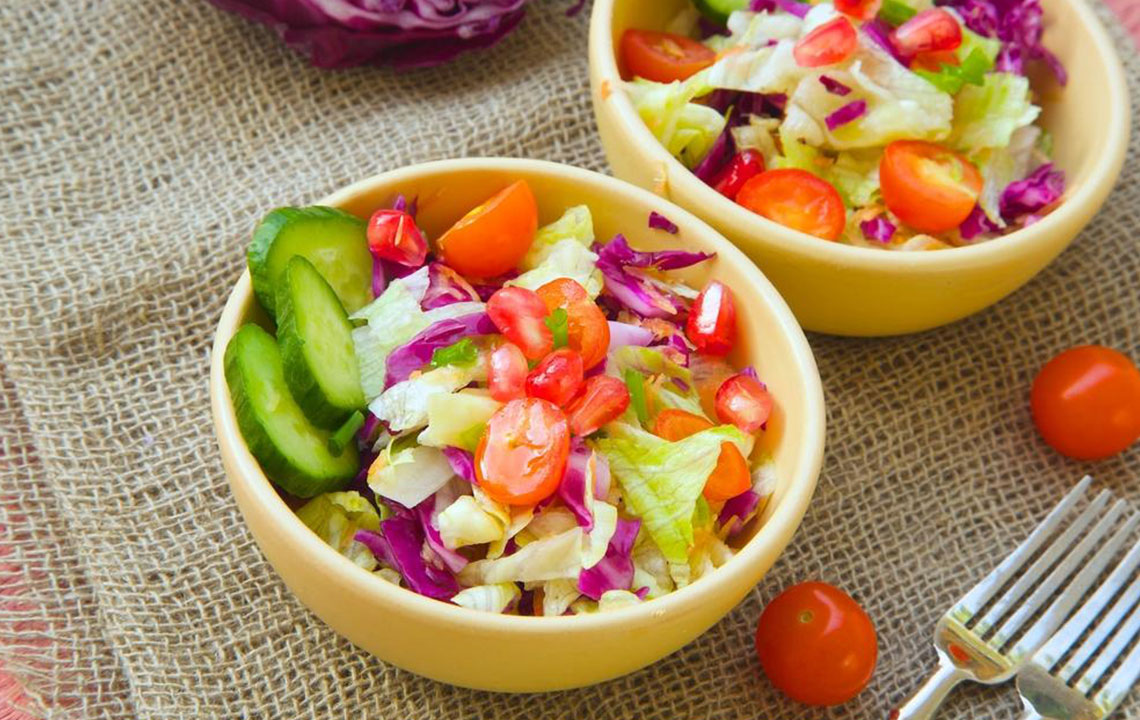Hiatal Hernia Diet for a Healthy Life

A hiatal hernia is a condition when a small part of the stomach slides up through a weak spot in the diaphragm. The stomach acid is pushed into the esophagus causing heartburn and other associated issues. A gastroesophageal reflux disease is one of the most common symptoms of a hiatal hernia.
Other symptoms include difficulty in swallowing, chest pain, and congestion. Most people don’t show any sign of a hiatal hernia and others who do, experience heartburn. Surgery is not required to treat this condition. Instead, doctors recommend patients to lead a healthy lifestyle by maintaining weight and eating small meals at a time.
There are a few foods that must be included in the hiatal hernia diet and a few that should be avoided. The symptoms are sure to subside if you eat healthy food on a daily basis.
Foods to include in your hiatal hernia diet
Here is a list of foods that you must include in your diet. These foods are sure to help you find relief from the heartburn.
Lean meats
Lean meats must be preferred over fatty acids if you have a hiatal hernia. Meats that have high-fat content can aggravate the conditions. These include red meats and cold cuts. Go for lean protein sources like codfish and chicken breasts. Bake your meat instead of frying it and use less spice in your foods.
Fruits and vegetables
Fruits and vegetables are an essential part of a balanced diet. You get all the necessary vitamins and minerals from them. Fruits that have antioxidants that can help reduce and prevent heartburns. Go for healthy options like raspberries, cherries, and apricots. Acidic and citrus fruits like oranges, tomatoes, and grapes must be avoided.
Consume more vegetables to increase your immunity and increase your metabolism. Green leafy vegetables like spinach and broccoli have plenty of vitamin B and calcium. Carrots and red peppers, on the other hand, are a rich source of antioxidants. Include other vegetables like sweet potatoes, beans, and kale in your hiatal hernia diet.
Dairy, oils, and grains
Dairy, oils, and grains are needed for us to gain the necessary nutrition. It is important to have them in sufficient amounts to keep your system healthy and free from heartburn. While dairy is essential for your system, high-fat products can aggravate the condition. Choose low-fat milk, yogurt, and cottage cheese.
When it comes to oils, use olive oil and safflower oils for your cooking. Other oils have more trans fats that can cause more harm than good. Whole grains must be utilized over refined starches. Include whole grains like brown rice, whole-grain pasta, and rye bread. Reduce the intake of refined carbohydrates and processed foods.
Beverages
Water is the most important part of your hiatal hernia diet. Avoid coffee and other caffeinated beverages as they can increase the chances of heartburn. Alcohol and other carbonated drinks can also elevate the condition. Instead, have herbal tea to avoid a hiatal hernia.
A hiatal hernia is not considered to be a life-threatening condition. However, consult a doctor if you are experiencing the symptoms. Take over-the-counter medications only if they are prescribed. Make sure you discuss your plans of changing your diet to your doctor before implementing it.
Foods to avoid in your hiatal hernia diet
Here is a list of foods that you should stay away from if you are experiencing hiatal hernia. These foods are generally not included in the hiatal hernia diet.
- Onions and garlic
- Citrus fruits like lemons and oranges
- Spicy and fried foods
- Chocolate and other bakery products
- Tomato based foods like spaghetti and salsa.
- Coffee or caffeinated drinks
- Alcohol and carbonated drinks
- Whole milk
Food habits that can trigger heartburn
The foods that cause heartburn are the same ones that should be avoided in the hiatal hernia diet. Unhealthy food habits are one of the main reasons behind heartburn.
- Eat food in smaller portions and increase the frequency of your meals.
- Have food two hours before you go to bed.
- Avoid having food in the middle of the night.
- Sit up straight and avoid physical activity for an hour after eating.
- Do not have foods that can trigger a heartburn.
The hiatal hernia diet has lots of foods you must eat. It might not be possible to follow the diet to the dot. However, you can moderate your food intake my maintaining a food diary. This way you will have a detailed idea of the foods that trigger your heartburn.
Maintain the diary for about two weeks and write down what and when you eat. Be sure to mention the symptoms you experience too. On doing so, you and your doctor can work out a hiatal hernia diet for you. The diet can help you lead a healthy lifestyle and stay away from the symptoms of a hiatal hernia.


